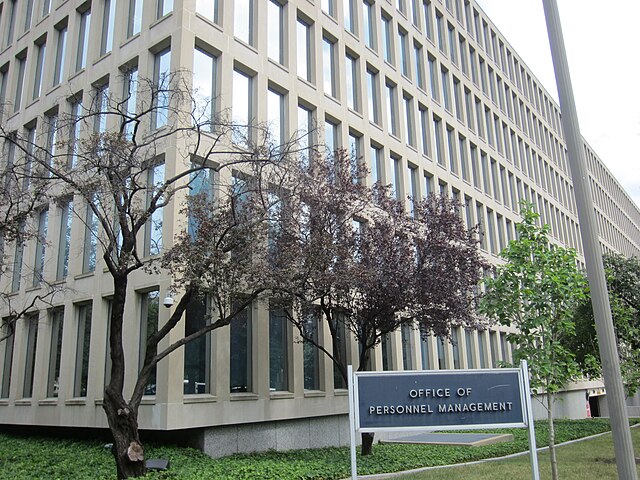Civil servants gave their employer record high marks for employee engagement and experience; but there are some important nuances
by Intelliworx
The Office of Personnel Management (OPM) published new data from its 2024 Federal Employee Viewpoint Survey (FEVS). The survey is a snapshot of the “organizational climate” for the millions of government employees working across some 430 government agencies. In other words, it asks civil servants how they are feeling about work.
The survey was first fielded in 2002 – periodically at first – and then annually since 2010. OPM employs an independent research firm to conduct the survey digitally. Respondents are solicited to participate by email.
The survey was conducted this year from May to July. OPM says the response rate was 41%. That’s up from 39% from the year prior. Mathematically, the exact sample size works out to 1,645,841, which puts the size of the federal workforce at north of 4 million employees.
This survey always gets a lot of attention, so we’ve combed over some of the reactions to provide a meta-analysis of sorts. Importantly, there’s no order of merit to the list of articles below other than we just think it’s the most logical way to present the information to readers.
1. Government workers are the most engaged they’ve ever been
Civil servants gave their employer high marks on the latest survey. The 2024 edition recorded an “employee engagement index score” of 73 out of 100 possible points. That number is “a record high and a one percentage point increase from 2023” according got reporting by Sean Michael Newhouse for Government Executive.
He also pointed to several related findings in his piece including:
- “87% of overall respondents said their supervisor treats them with respect.”
- “78% reported that they have trust and confidence in their supervisor.”
- “79% said their supervisor supports employee development.”
Participation in the survey this year also rose – which we believe could also be interpreted as a score of employee engagement. “The response rate this year increased to 41% from 39% in 2023.”
Comment: We’ve been through a lot of change over the last few years – from telework to price inflation – the hits seem to keep on coming. Scores like this suggest the federal government, as an employer, seems to be getting it right.
Read more: Feds’ employee experience and engagement continued to climb in 2024, FEVS data finds by GovExec
(Click for larger image)
2. CX in government is for civil servants too
Government agencies that take care of their civil servants will deliver a better customer experience (CX) for that agency’s constituents. That was the hypothesis Brandon Lardy posited and set out to test for the Partnership for Public Service.
The organization “built a dataset composed of employee satisfaction and human capital data” from 21 of the largest agencies (named in the CFO Act) and compared it with the results from the most FEVS.
The results? Agencies with “higher rates of employee engagement and satisfaction with leadership, communication and employee input reported higher employee satisfaction with the support and services from their human capital, IT, finance and acquisition functions.”
Comment: The government’s new interest in CX shouldn’t be limited to external audiences. Employers that take care of their employees foster a culture that takes care of their customers.
Read more: Federal agencies that create a productive work environment are better positioned to meet customer needs by the Partnership for Public Service
3. The difference between employee engagement and employee experience
Drew Friedman pointed out some of the “subtle” but important nuances that go with the terms used in the survey – and the numbers that measure them in a story for the Federal News Network (FNN).
Engagement measures workplace conditions such as “leadership, meaningful work and career development opportunities.” These should be used “to understand where they should look to either maintain – or improve – those various workplace conditions.”
By contrast, experience measures the actions taken based on the engagement scores. In Drew’s words, “Are the adjustments actually making employees feel more engaged?”
Engagement scores ticked up this year, while experience scores were similarly high, but also largely flat compared to the year prior.
Comment: Experience and engagement are buzzy terms in government and private sector circles alike. They are related but the differences matter too. Drew offers a very keen observation that effectively describes the nuance and breaks down cause and effect.
Read more: The subtle difference between engagement and experience in 2024 FEVS by FNN
4. Performance recognized differently
Deborah J. Hopkins an attorney for the Federal Employment Law Training Group (FELTG) observed the vast majority of respondents feel they have a supportive supervisor. Some of the findings she cited were:
- “My supervisor supports my need to balance work and other life issues: 84%.”
- “My supervisor listens to what I have to say: 82%.”
- “My supervisor treats me with respect: 86%.”
- “My supervisor holds me accountable for achieving results: 87%.”
However, dealing with underperformers – and every organization has some – was an area she “found troubling”:
- “In my work unit, differences in performance are recognized in a meaningful way: 45%.”
She explains:
“Until the 2022 FEVS, an item that appeared on every FEVS for as long as I can remember was ‘In my work unit, steps are taken to deal with a poor performer who cannot or will not improve.’ That number usually wavered between 27 and 42 percent. The question hasn’t been on the last two FEVS so it’s hard to capture the difference between how employees feel about their supervisor holding them accountable, and their supervisor holding coworkers accountable.”
Comment: This isn’t a fun part of the survey, but it is important. There are a lot of reasons why an employee underperforms, but you can’t see it or address it if you don’t measure it. That creates room for unobserved discontent to fester and spread.
Read more: Initial Takeaways from the 2023 FEVS by FELTG
5. Views on government compensation are less sanguine
Writing for MeriTalk, Grace Dille noted the scores as well but also pointed out that the survey found some room for improvement in certain areas. One such area was compensation.
“Nevertheless, some categories saw lower scores from Federal employees in 2024. For example, employees were less satisfied with their pay this year, showing a decrease of one percentage point from 25 percent satisfaction in 2023, to 24 percent in 2024.”
There’s an average 2% pay raise coming in January of 2025 for federal workers.
Comment: The prevailing view of government salaries is that they are typically lower than the private sector. Some argue that people are not called to government service for money, but it does matter for recruiting and retention. So do the other benefits of federal employment, which can be a tool for attracting great talent at a lower cost. Telework is one hot-button example and can be resolved by focusing the conversation on measuring productivity.
Read more: Federal employee engagement hits all-time high in 2024 FEVS by MeriTalk
6. Lower scores for civil servants in the field
Civil servants in the field reported lower employee engagement and pay satisfaction scores. That’s according to a second of several pieces on the survey for the Federal News Network (FNN) by Drew Friedman.
She noted, “The Partnership for Public Service found that employee pay satisfaction at field offices is 8% lower than it is at agency headquarters.” In addition, “field office employee scores are also almost 10% lower than headquarters on how satisfied they are with the recognition they get from their agencies.”
Comment: The laws of physics apply to leadership as well. If you throw a ball, it loses velocity the further away it gets. The same is true for leadership, so it’s really important to have a plan for visiting, speaking with and recognizing the efforts of field staff.
Read more: The farther from agency headquarters, the harder the federal workforce challenges by FNN
* * *
OPM created an interactive and publicly available dashboard with data from 2020-2024 here: 2024 OPM Federal Employee Viewpoint Survey (FEVS).
If you enjoyed this post, you might also like:
7 interesting benefits government agencies should experience when modernizing their forms and application processes
Image credit: WikiMedia and FEVS




